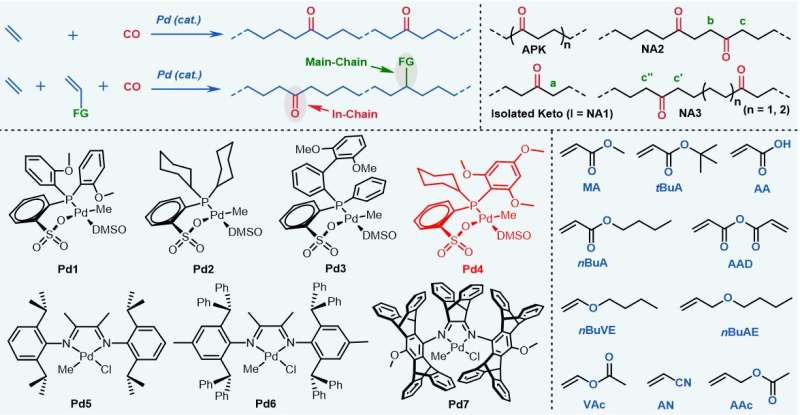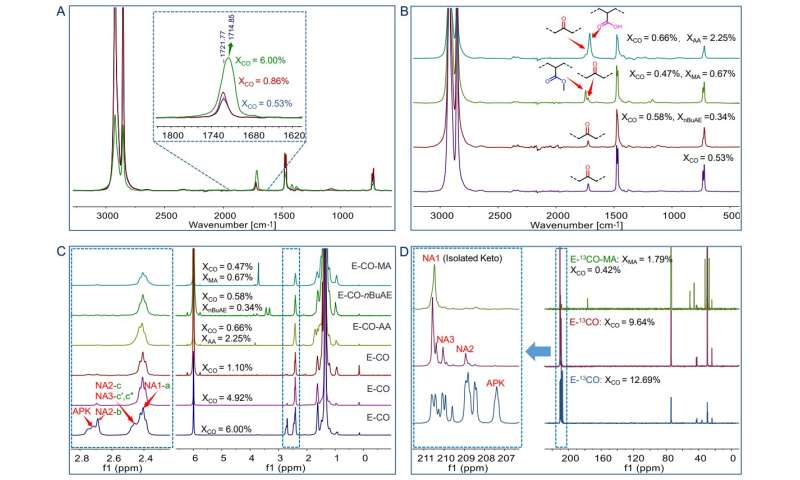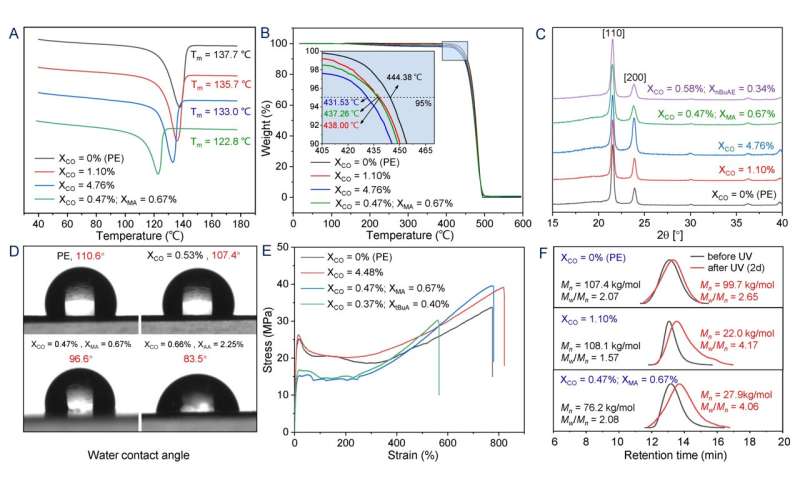This article has been reviewed according to Science X's editorial process and policies. Editors have highlighted the following attributes while ensuring the content's credibility:
fact-checked
trusted source
proofread
Degradable polyethylene plastics from the nonalternating terpolymerization of ethylene, CO, and polar monomers

In a study published in the journal National Science Review and led by Dr. Zhongbao Jian (State Key Laboratory of Polymer Physics and Chemistry, Changchun Institute of Applied Chemistry, CAS), E/CO/PM terpolymerizations were carried out with seven palladium catalysts, which were strictly non-alternating (>99%) with Pd4.
Polar monomers included acrylates, acrylic acid, vinyl ethers, vinyl acetate and acrylonitrile. High molecular weight linear polyethylene with the low content of isolated carbonyl group (selectivity > 99%) and polar functional group was developed.
The molecular structure of the resulting polymer was analyzed in detail, and the microstructure of the E/CO/PM copolymer was clearly characterized by IR, nuclear magnetic resonance spectroscopy (1H/13C/2-D NMR) and 13CO labeling technology.
-

A: IR spectra of E/CO copolymers; B: IR spectra of E/CO/PM terpolymers; C: 1H NMR spectra of copolymers and terpolymers; D: 13C NMR spectra of 13CO-labeled copolymers and terpolymers. Credit: Science China Press -

A: DSC curves. B: TGA curves. C: WXRD analyses. D: Water contact angles. E: Tensile tests. F: Photodegradability of polymer. Credit: Science China Press
The properties of the resulting polymers were comprehensively tested by differential scanning calorimetry (DSC), thermogravimetric analysis (TGA), wide-angle X-ray diffraction (WXRD), tensile testing, water contact angle (WCA) experiments, and photodegradation experimental techniques.
More information: Chaoqun Wang et al, Photodegradable Polar Functionalized Polyethylenes, National Science Review (2023). DOI: 10.1093/nsr/nwad039
Provided by Science China Press





















